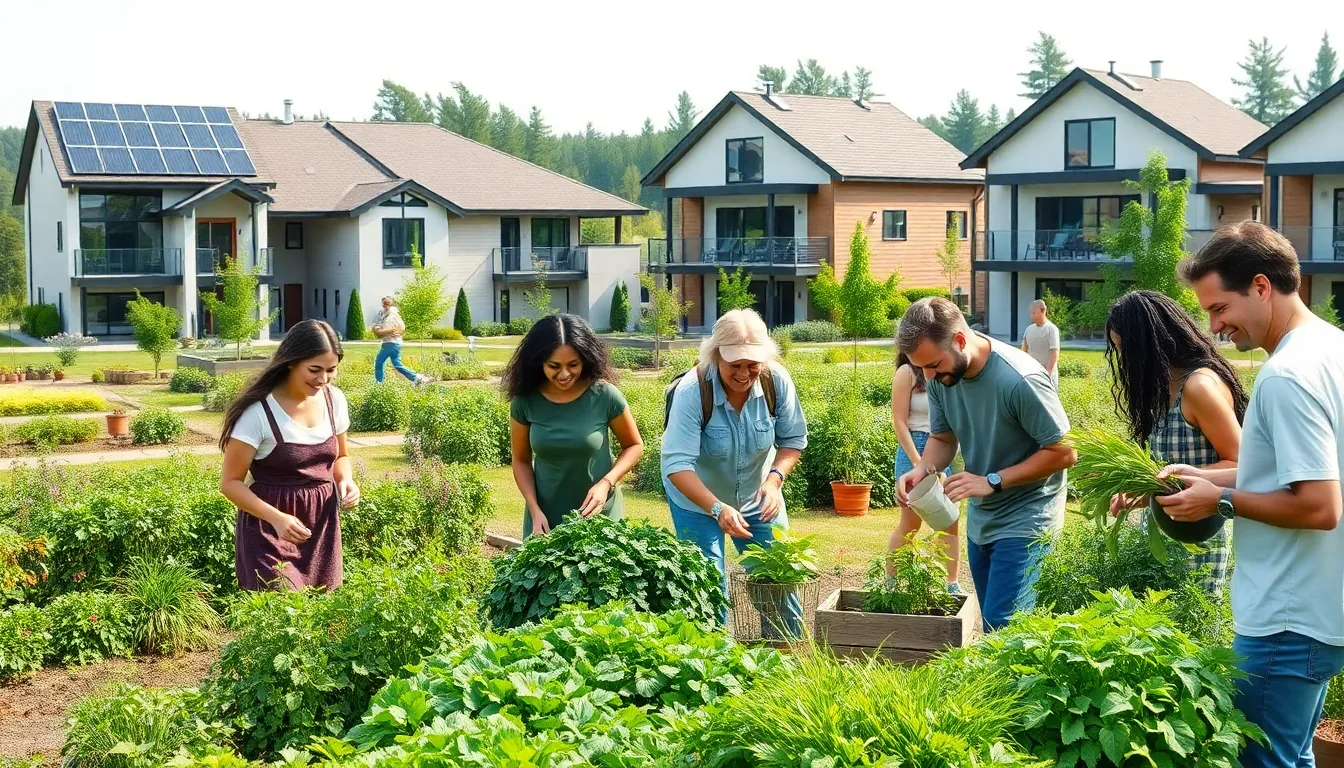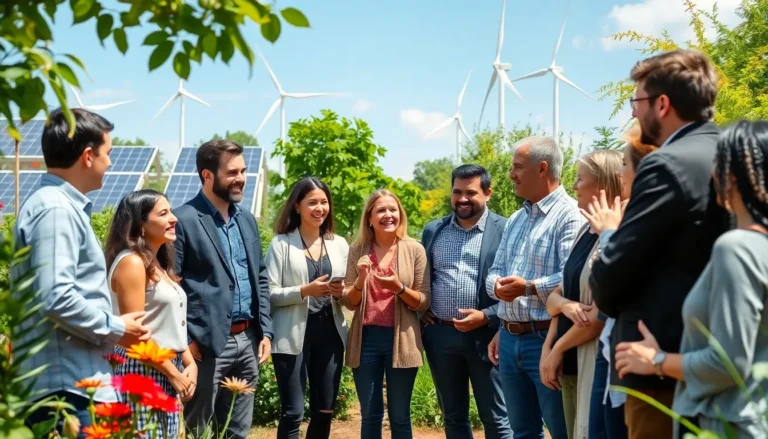Imagine a place where the air feels fresher, the food tastes better, and your neighbors are actual friends instead of just the folks you wave to from your front porch. Welcome to sustainable living communities. These eco-friendly havens offer a lifestyle choice that not only feels right but is also quite necessary for our planet’s future. In this text, we’ll explore the ins and outs of these communities, their benefits, and how to create one yourself, because who wouldn’t want to live in a place where everything just feels… right?
Table of Contents
ToggleUnderstanding Sustainable Living Communities

Sustainable living communities represent a collective approach to environmental responsibility. They emerge from the notion that living sustainably isn’t just an individual effort: it’s a shared journey. Residents typically focus on reducing their carbon footprints through various means, such as shared resources, organic farming, and renewable energy sources.
These communities can range from cooperative housing arrangements to intentional neighborhoods designed to minimize environmental impact. Not only do they emphasize communal living, but they also prioritize a harmonious relationship with nature. Here, residents often engage in practices like rainwater harvesting and composting, making them pioneers of a greener lifestyle.
In essence, sustainable living communities reflect a growing desire to foster a more eco-conscious society, which feels more vital than ever in the face of climate change.
Benefits of Sustainable Living Communities
The advantages of sustainable living communities extend far beyond merely saving the planet. Here are some compelling benefits that make these communities incredibly appealing:
- Cost Savings: By pooling resources and sharing tools or appliances, families often find their utility bills plummet.
- Strong Community Bonds: Living near like-minded people fosters friendships and support networks. Imagine living in a place where you actually know your neighbor’s name.
- Healthier Lifestyle: Many communities prioritize organic gardens and communal meals, leading to a healthier diet and improved well-being.
- Educational Opportunities: Residents frequently engage in communal learning, sharing skills like gardening or carpentry. There’s always something new to learn.
- Resilience: These communities often adapt quickly to challenges, such as food scarcity or energy supply disruptions, thanks to their collaborative nature.
- Environmental Impact: Finally, the collective focus on sustainability helps reduce waste, conserve resources, and lower carbon emissions.
Key Features of Sustainable Living Communities
What sets these communities apart? Let’s investigate into some distinctive features that embody the spirit of sustainable living:
- Renewable Energy Sources: Many communities rely on solar panels, wind turbines, or bioenergy, minimizing their dependence on non-renewable resources.
- Shared Spaces: Communal kitchens, gardens, and recreational areas encourage social interaction and reduce personal resource consumption.
- Eco-friendly Architecture: Homes are often built using sustainable materials and designed to be energy-efficient. Think natural light, passive solar design, and green roofs.
- Permaculture Practices: Emphasis is placed on growing food in harmony with nature, using techniques that enrich the soil and promote biodiversity.
- Waste Reduction Initiatives: Many communities carry out zero-waste programs, encouraging composting, recycling, and reusing items whenever possible.
Challenges Faced by Sustainable Living Communities
While the idea of living sustainably seems idyllic, challenges certainly lurk around every corner. Here are some potential obstacles:
- Initial Costs: Setting up infrastructure, even with the potential for long-term savings, can be prohibitively expensive for some.
- Regulatory Hurdles: Zoning laws and building codes may not always accommodate the unique designs and structures integral to sustainable communities.
- Conflict Resolution: With shared living spaces come differences in opinion, which can lead to interpersonal conflicts if not addressed openly.
- Sustainability Fatigue: Even the most devoted eco-warriors might struggle with maintaining enthusiasm over time, leading to decreased participation in community initiatives.
Examples of Successful Sustainable Living Communities
A glimpse into success stories reveals how varied and vibrant sustainable living communities can be:
- EcoVillage in Ithaca, New York: This internationally recognized project combines education, activism, and co-housing, fostering community resilience and sustainable practices.
- Auroville in India: Founded in 1968, Auroville is an experimental township focusing on the principles of human unity, offering an immersive community experience.
- Twin Oaks in Virginia: A successful commune that not only emphasizes shared labor but also champions equal income distribution among its members.
Each of these examples showcases a unique approach to sustainability, proving that the model can be adapted to fit different cultures and geographic needs.
How to Create Your Own Sustainable Living Community
Thinking about starting your own sustainable living community? Here’s a roadmap to guide you on this ambitious journey:
- Gather Like-minded Individuals: Start by connecting with people who share your vision. Hosting informational meetings can help gauge interest.
- Choose a Location: Evaluate potential sites based on proximity to resources, zoning laws, and environmental impact.
- Develop a Shared Vision: Clearly outline community goals, values, and the sustainable practices everyone will adhere to.
- Plan the Infrastructure: Consider how homes will be structured, where shared spaces will be located, and what facilities are needed.
- Legal and Financial Structure: Research necessary legal frameworks, from incorporation to financing options, to set a solid foundation for your community.
- Stay Flexible: Understand that the process may require adaptability, as unforeseen challenges often arise.
Embrace the journey.






